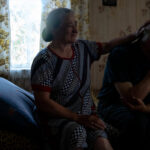
KYIV, Ukraine — As the eastern city of Sievierodonetsk appears close to falling to Russia, military analysts say that Ukraine’s outgunned and outnumbered forces are trying to draw out the fight to inflict more casualties against Moscow.
Russia has been using its advantage in longer-range artillery to bombard eastern cities from a distance, leveling them and killing or driving out civilians, raising the question of whether it is worth the cost in Ukrainian soldiers’ lives to defend them. President Volodymyr Zelensky has described Sievierodonetsk as a “dead” city.
In Sievierodonetsk, the analysts say, the Ukrainians’ hope is that by drawing Russian forces into street-by-street battles, they can defuse Moscow’s heavy weapons advantage, at least for a time, since close-quarter fighting raises the risk for Russia that artillery strikes would bombard their own soldiers.
“If the Ukrainians succeed in trying to drag them into house-to-house combat, there is a higher chance of inducing casualties on the Russians that they cannot afford,” said Gustav Gressel, a Ukraine expert from the European Council on Foreign Relations.
Still, the Ukrainians are taking a chance by drawing the Russians into street fighting, risking getting trapped in the city — especially as the last bridge that would allow a fast escape has been destroyed. Mr. Zelensky has also acknowledged the cost of close combat “in terms of the number of people killed, the number of losses.”
But with Western weapons slow in coming, the Ukrainians appear to be calculating that it is worth the risk for now.
Although street fighting kills large numbers of Ukrainian soldiers — officials have estimated that Ukraine is losing up to 200 soldiers daily in battle — it also inflicts casualties on the Russians in greater numbers than uneven artillery and tank battles in the open fields.
Before the Russian invasion, the Ukrainian military had studied approaches to fighting an enemy with superior armored vehicle and artillery capabilities, including by drawing lessons from urban combat in cities such as Aleppo in the Syrian war.
In December, military instructors told volunteers preparing to defend Kyiv, the capital, to fight in urban locations at the closest possible engagement ranges, to prevent the Russians from calling in artillery without risking strikes that would hit their own soldiers, too.
These tactics were not needed within Kyiv, because Russian forces were repelled before entering the city. But Ukraine put them to use in urban combat in Mariupol, where Ukrainian fighters facing much larger Russian forces were able to engage the enemy troops for weeks.
Mykhailo Samus, the deputy head of the Center for Army, Conversion and Disarmament Studies, argued that the Ukrainian military’s dogged resistance had also bought its forces time, holding Russia off from advancing farther into eastern Ukraine as they hope that more shipments of Western weapons arrive. The goal, he said, is to “exhaust, or reduce, the enemy’s offensive capabilities.”
It is not clear, however, how long such a strategy can work in Donbas, where the largely flat plains favor Russian artillery, and as longer-range weapons from the United States and other Ukrainian allies are slow to arrive. While Ukrainian casualties mount, Mr. Zelensky has acknowledged that Russia has more troops it can use as “cannon fodder.”
In a speech this week to the American Jewish Committee Global Forum, he repeated his plea for allies to send more arms, more quickly.
“We need powerful weapons for the offensive, without which the war will only drag on and the number of victims will increase,” he said.
Oleksandr Chubko contributed reporting.




